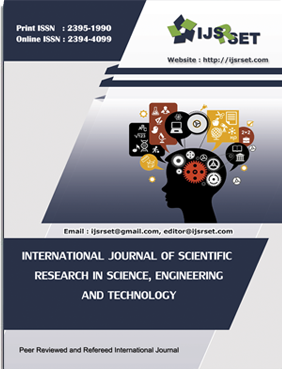Total Digestibility and Protein Digestibility of Litopenaeus Vannamei Feed Made from Moringa Oleifera Flour
DOI:
https://doi.org/10.32628/IJSRSET241144Keywords:
Total Digestibility, Protein Digestibility, Litopenaeus vannamei, Moringa oleiferaAbstract
This study aims to evaluate the overall digestibility and protein digestibility of feed containing Moringa oleifera meal in white shrimp (Litopenaeus vannamei). The research method involved using standard techniques to feed the shrimp with various concentrations of Moringa oleifera meal and measure total digestibility and protein digestibility. The results showed that the highest total digestibility was obtained in treatment C at 58,68%, while the lowest was in treatment B at 19,35%. Protein digestibility values ranged from 71,94% to 84,94%, with the highest protein digestibility found in treatment C(10% Moringa oleifera leaf meal and 10% soybean meal). These findings indicate that the Moringa oleifera meal has the potential to be an effective and sustainable alternative feed ingredient for the cultivation of Litopenaeus vannamei, provided that its processing can minimize antinutrients. Further research is needed to optimize feed formulation and processing techniques to enhance the digestibility quality of the Moringa oleifera meal.
📊 Article Downloads
References
C. Y. Tsai, C.-C. Chi, and C.-H. Liu, “The growth and apparent digestibility of white shrimp, Litopenaeus vannamei, are increased with the probiotic, Bacillus subtilis,” Aquaculture Research, vol. 50, no. 5, pp. 1475–1481, 2019, doi: 10.1111/are.14022.
Y. Jasmanindar, S. Sukenda, A. Alimuddin, M. Z. Junior, and N. B. P. Utomo, “The Chemical Composition of Gracilaria verrucosa Extract and its Utilization on Survival and Growth Litopenaeus vannamei,” Omni-Akuatika, vol. 14, no. 3, Art. no. 3, Nov. 2018, doi: 10.20884/1.oa.2018.14.3.508.
W. Afuang, P. Siddhuraju, and K. Becker, “Comparative nutritional evaluation of raw, methanol extracted residues and methanol extracts of moringa (Moringa oleifera Lam.) leaves on growth performance and feed utilization in Nile tilapia (Oreochromis niloticus L.),” Aquaculture Research, vol. 34, no. 13, pp. 1147–1159, 2003, doi: 10.1046/j.1365-2109.2003.00920.x.
E. Dongmeza, P. Siddhuraju, G. Francis, and K. Becker, “Effects of dehydrated methanol extracts of moringa (Moringa oleifera Lam.) leaves and three of its fractions on growth performance and feed nutrient assimilation in Nile tilapia (Oreochromis niloticus (L.)),” Aquaculture, vol. 261, no. 1, pp. 407–422, Nov. 2006, doi: 10.1016/j.aquaculture.2006.08.006.
B. Moyo, P. J. Masika, A. Hugo, and V. Muchenje, “Nutritional characterization of Moringa (Moringa oleifera Lam.) leaves,” AJB, vol. 10, no. 60, pp. 12925–12933, Oct. 2011, doi: 10.5897/AJB10.1599.
T. Takeuchi, “Laboratory work-chemical evaluation of dietary nutrients,” Fish Nutrition and Mariculture, pp. 179–226, 1988.
D. Fahmiyanto, A. Agustono, and T. Nurhajati, “Subtitusi Tepung Ikan Dengan Tepung Keong Mas Pada Pakan Buatan Terhadap Kecernaan Bahan Kering Dan Lemak Kasar Udang Vanname (Litopenaeus vannamei),” Journal of Aquaculture and Fish Health, vol. 2, no. 1, pp. 30-36, 2013, doi: 10.20473/jafh.v2i1.18250.
A. Agustono, “Pengukuran Kecernaan Protein Kasar, serat Kasar, Lemak Kasar, dan Energi Pada Pakan Komersial Ikan Gurami (Osphronemus gouramy) dengan Menggunakan Teknik Pembedahan
[Digestibility Value Of Crude Fiber and Nitrogen Free Extract (Nfe) for Different Commercial Feed In Gouramy (Osphronemus goramy Lac.) Using Surgical Technique],” Jurnal Ilmiah Perikanan dan Kelautan, vol. 6, no. 1, pp. 71-80, Apr. 2014, doi: 10.20473/jipk.v6i1.11384.
D. M. Jannah, R. Rosmawati, and R. Samsudin, “Perbaikan Daya Cerna Tepung Darah Menggunakan Teknik Silase Dan Teknik Spray Dried Pada Ikan Nila (Oreochromis niloticus),” Jurnal Mina Sains, vol. 2, no. 1, pp. 15-23, Apr. 2016, doi: 10.30997/jms.v2i1.415.
M. Hamzah, W. H. Muskita, and A. Kurnia, “Digestibility of moringa leaf meal (Moringa oleifera) feed in milkfish (Chanos chanos),” AACL Bioflux, vol. 14, no. 1, pp. 291–297, 2021.
A. Y. D. Kusumabhakti, M. Muhajir, and I. Wirawan, “Respon Konsentrasi Protein Yang Berbeda Pada Pakan Terhadap Pertumbuhan Berat Mutlak Udang Vaname (Litopenaeus vannamei) Umur PL8-PL21 di Bak-bak Percobaan,” Juvenil: Jurnal Ilmiah Kelautan dan Perikanan, vol. 4, no. 3, pp. 223-226, Aug. 2023, doi: 10.21107/juvenil.v4i3.20596.
S. Selpiana, L. Santoso, and B. Putri, “Kajian Tingkat Kecernaan Pakan Buatan Yang Berbasis Tepung Ikan Rucah Pada Ikan Nila Merah (Oreochromis niloticus),” e-Jurnal Rekayasa dan Teknologi Budidaya Perairan, vol. 1, no. 2, pp. 101-108, Feb. 2013.
T. Hertanti, S. Subandiyono, and S. Hastuti, “Pengaruh Kadar Protein Pakan yang Berbeda Berbasis Rasio E/P 8,5 Kkal/G Protein Terhadap Tingkat Konsumsi Pakan dan Pertumbuhan Udang Jerbung (Fenneropenaeus merguiensis),” Sains Akuakultur Tropis : Indonesian Journal of Tropical Aquaculture, vol. 4, no. 1, pp. 1–12, Apr. 2020, doi: 10.14710/sat.v4i1.5649.
C. Y. Cho, C. B. Cowey, and T. Watanabe, Finfish Nutrition in Asia: Methodological Approaches to Research and Development. International Development Research Centre, 1985.
N. Aida, I. Suharman, and Adelina, “Pemanfaatan Tepung Daun Kelor (Moringa oleifera) yang Difermentasi Menggunakan Rhyzopus sp. Dalam Pakan Buatan untuk Pertumbuhan Benih Ikan Bawal Air Tawar (Colossoma macropomum),” Jurnal Akuakultur Sebatin, vol. 1, no. 1, pp. 51-62, Oct. 2020.
Downloads
Published
Issue
Section
License
Copyright (c) 2024 International Journal of Scientific Research in Science, Engineering and Technology

This work is licensed under a Creative Commons Attribution 4.0 International License.




